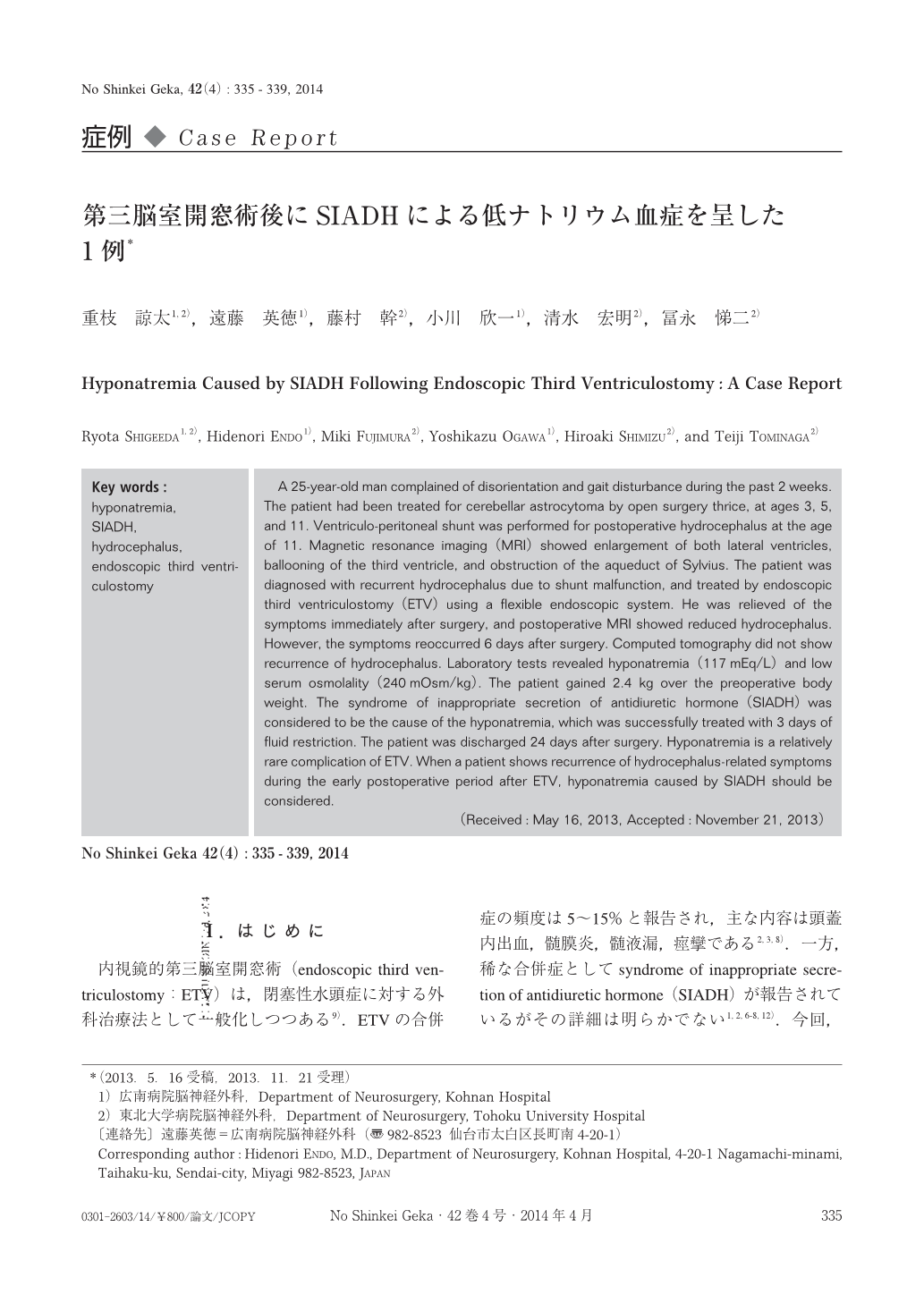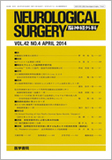Japanese
English
- 有料閲覧
- Abstract 文献概要
- 1ページ目 Look Inside
- 参考文献 Reference
Ⅰ.はじめに
内視鏡的第三脳室開窓術(endoscopic third ventriculostomy:ETV)は,閉塞性水頭症に対する外科治療法として一般化しつつある9).ETVの合併症の頻度は5~15%と報告され,主な内容は頭蓋内出血,髄膜炎,髄液漏,痙攣である2,3,8).一方,稀な合併症としてsyndrome of inappropriate secretion of antidiuretic hormone(SIADH)が報告されているがその詳細は明らかでない1,2,6-8,12).今回,ETV後にSIADHに起因する低ナトリウム(Na)血症を合併した症例を経験したので報告する.
A 25-year-old man complained of disorientation and gait disturbance during the past 2 weeks. The patient had been treated for cerebellar astrocytoma by open surgery thrice, at ages 3, 5, and 11. Ventriculo-peritoneal shunt was performed for postoperative hydrocephalus at the age of 11. Magnetic resonance imaging(MRI)showed enlargement of both lateral ventricles, ballooning of the third ventricle, and obstruction of the aqueduct of Sylvius. The patient was diagnosed with recurrent hydrocephalus due to shunt malfunction, and treated by endoscopic third ventriculostomy(ETV)using a flexible endoscopic system. He was relieved of the symptoms immediately after surgery, and postoperative MRI showed reduced hydrocephalus. However, the symptoms reoccurred 6 days after surgery. Computed tomography did not show recurrence of hydrocephalus. Laboratory tests revealed hyponatremia(117mEq/L)and low serum osmolality(240mOsm/kg). The patient gained 2.4 kg over the preoperative body weight. The syndrome of inappropriate secretion of antidiuretic hormone(SIADH)was considered to be the cause of the hyponatremia, which was successfully treated with 3 days of fluid restriction. The patient was discharged 24 days after surgery. Hyponatremia is a relatively rare complication of ETV. When a patient shows recurrence of hydrocephalus-related symptoms during the early postoperative period after ETV, hyponatremia caused by SIADH should be considered.

Copyright © 2014, Igaku-Shoin Ltd. All rights reserved.


